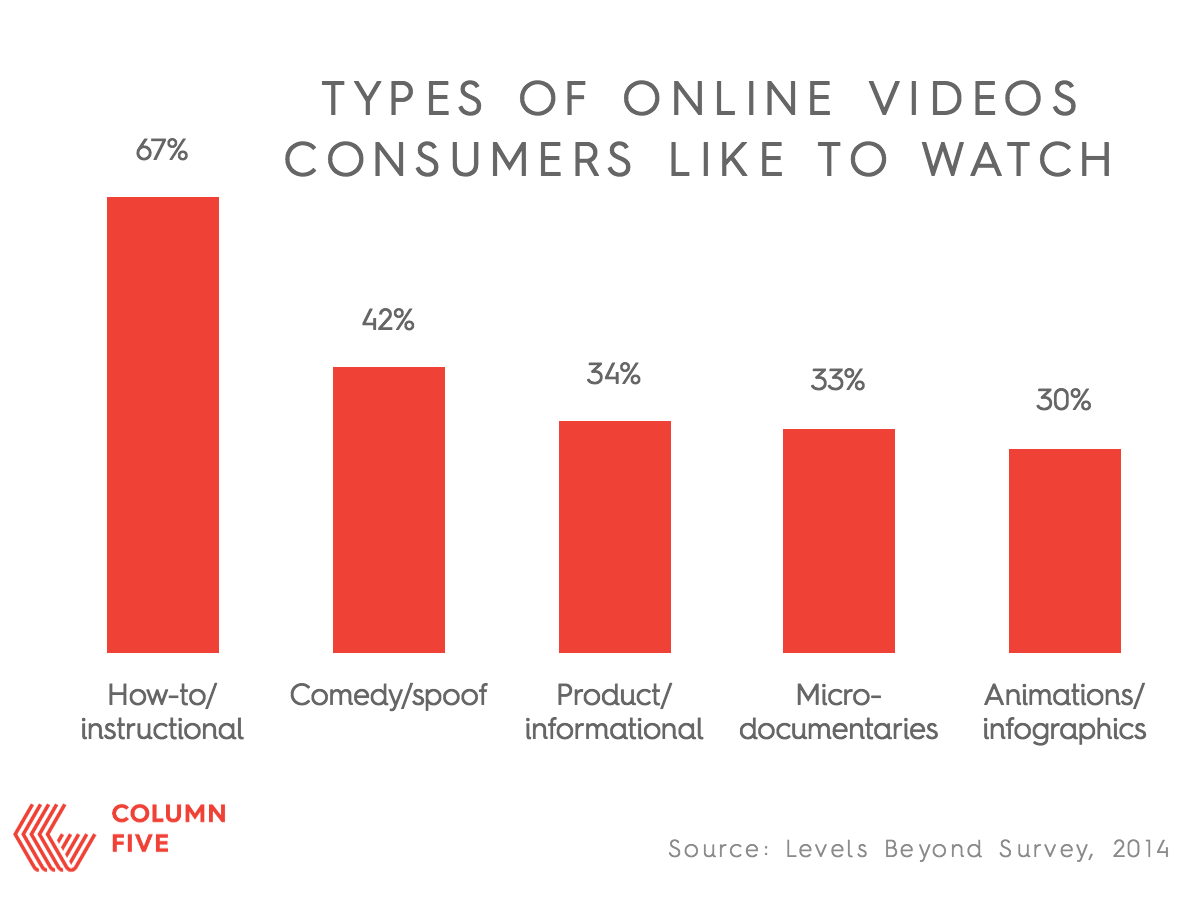A good explainer video is a secret weapon. It helps you pull off the eternal challenge of making complex ideas not only understandable but memorable to your audience. It helps you distill your brand messaging and communicate your brand personality in an entertaining way. And a good explainer video engages your viewers in an increasingly competitive and distracting digital landscape.

Why The Explainer Video Is So Popular
Explainer videos work because they target our brain processing centers. (Find out more about how explainer videos benefit your brand and audience.)
Because explainer videos are so efficient at communicating, audiences crave them. According to a 2014 Levels Beyond survey, 59% of consumers say they would watch a brand video on a company site, while 67% like to watch how-to or tutorial videos most.

Additionally, 51% of Millennials and 30% of Baby Boomers say they would rather watch a video than read the same info from a brand.

That said, just because explainer videos are an effective tool—and highly popular—doesn’t mean absolutely ever brand needs one.

Do You Need an Explainer Video?
Before diving in, think critically about your content strategy and how an explainer video factors in. Like every marketing tactic, explainer videos are a great tool if they align with your needs. To find out if it’s the right choice, ask yourself these four questions.
1) What’s your goal?
This may sound like an obvious question, but wanting to explain something isn’t enough. Are you pitching your brand for the first time? Are you showcasing your product or service and how it works? Make sure you have a clear objective that isn’t several missions smushed together in an attempt to achieve everything at once. (An explainer video is not meant to explain everything.)
If your company’s culture, product, service, or business plan can easily be understood in a few basic sentences, you might be better off with that approach. If a tutorial, demonstration, or concept overview is a little more detailed, the explainer video route is a good option.
2) Who are you looking to impress or educate?
Nail down who you’re enlightening with your content by considering your spread of demographics, from gender and region to industry and job level. This helps determine a starting point, so you know how in depth your explainer video terminology and concept can be.
Your target audience influences everything you would do in an explainer video: tone, visuals, language, music, you name it. Will this content resonate with them? Will the video catch their attention and leave an impact? If you haven’t truly identified your target audience, try our exercise for creating pain-free customer personas in under 60 minutes.
3) What is your story?
If your story is too broad or too simple, an explainer video will not be as effective. How complicated is your story? How well does it flow? How concise is your narrative? If you aim for the shortest and simplest execution of your idea, you can create a great explainer video. Any other avenue will get muddied.
Know where the story begins, how the focus of the information should be communicated, and what your CTA will be. These are the elements of a good explainer.
4) What takeaway or action are you after?
Giving your audience a way to pass their time is nice of you, but that’s not why you make an explainer video (or most content marketing assets, really). Why are you explaining this particular concept? What do you hope to give the viewer, and what do you want them to do once they get it?
Explainer videos take significant production effort, so if you don’t have a specific action you hope your viewer will take, you might want to reconsider. If you want to nudge someone in a certain direction or communicate specific information, explainer videos can get the job done.
If you’ve decided that an explainer video is the way to go, read our tips for choosing a video agency to make sure you find the right partner. And if you need some inspiration, take a look at the awesome explainer videos in these 100 motion graphic examples.





